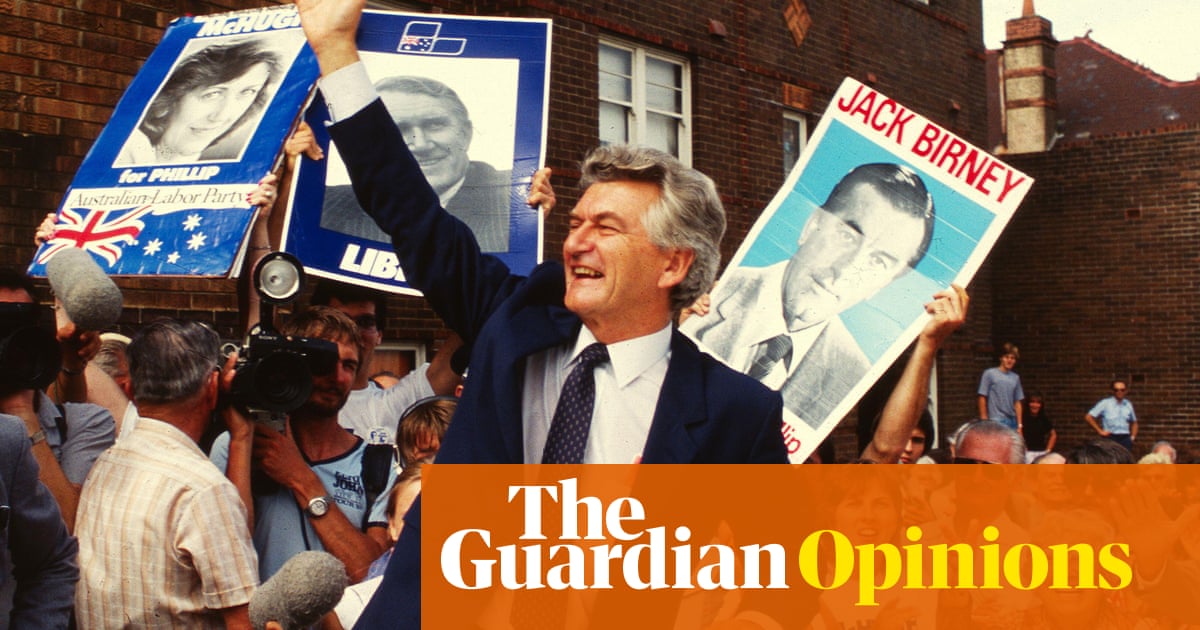In a dramatic departure from normal practice, Mr Crisis and Ms Opportunity have arrived arm-in-arm at the Australian front door. Usually –remember the pandemic– Mr Crisis arrives unexpectedly and noisily and leaves Ms Opportunity sitting in the car drawing up lists of transformative things that might be done.
The enormity of this moment, when the Australian people have acknowledged the crises but signalled they want decisive action – by electing a stable majority government that no longer needs to jump at aMurdoch-shaped shadow– should not be underestimated.
This crisis is global thanks to climate change, a capricious rule-bending American president, a concentration of wealth almost without precedent, and digital colonisation. And it is local. It affects the quality of life and safety, economic diversity and robustness, intergenerational equity and the foundational flaw of failing to meaningfully recognise the First Peoples.
Ms Opportunity has lots of ideas about how these crises might be addressed in a way that endures for decades, reshapes the economy, strengthens social relations and even, when she is feeling particularly ambitious, sets an example for the rest of the world.
It has been done before – when Mr Crisis was big enough and his ambition unchecked. Solving it used to be calledthe Australian way, generally drawing on warning expert reports written a decade before. So the time is now right for the inquiries commissioned during the Rudd-Gillard-Rudd years.
Ms Opportunity has read many of the reports: Garnaut on the climate opportunity, Henry on tax reform, the Asian century report, Gonski on education, Treasury on intergenerational equity, the referendum council, Uluru statement and Calma Langton reports on robust First Nations recognition.
She knows that all these documents – and many others – were compiled by experts who consulted widely and distilled the best way forward. Sadly, most have since been gathering dust, jettisoned to a digital archive where a 404-error message is the likely result of a cursory search.
When Jim Chalmers listed the achievements of Labor’s first term and the prospects for the second onInsiders after the election, his pride was palpable and well deserved. He was an adviser to the Rudd-Gillard-Rudd governments, when many of these reports were written, and he saw the brutal pushback from miners and otherswhose interests were threatened. But he is now in a stronger position than any treasurer during that time.
There is an important lesson from the Hawke government, in getting beyond the details to clearly address the bigger picture. It was elected promising to restructure the Australian economy, which had been enfeebled by protectionist policies and a lack of ambition.
Sign up for Guardian Australia’s breaking news email
Bob Hawke’s last campaign event in 1983 was in Wollongong; the steel industry was on the brink of collapse. Five months earlier thousands of sacked workers had travelled to Canberra to be heard. Malcolm Fraser refused to meet them, and in furious despair the crowdsurged up the steps of old parliament house, breaking the glass doors and finding themselves in Kings Hall.
Hawke’s Wollongong visit did not condone the action but he listened and acknowledged the crisis. He promised a steel plan, but did not say he would float the dollar or deregulate the economy. He used his narrative gifts to promise arestructured economy. In the process he and Paul Keating crafted a unique Australian model, neoliberalism with a heart. It was not perfect, but it was a lot better than it might otherwise have been.
Sign up toAfternoon Update
Our Australian afternoon update breaks down the key stories of the day, telling you what’s happening and why it matters
after newsletter promotion
This is a similar moment. It is no longer the unionsstorming the parliamentbut people who are passionate about using the current crises to create another Australian moment – many who coalesced around the community independent movement.
It is an enormous credit to the prime minister that he has won such overwhelming support from the Australian people. Many of the first-term achievements and promises for the second are important and have the potential to affect many lives.
But, with some exceptions, most are gifts plucked from a more complex policy problem – reducing personal taxes a little, increasing government support for early childhood education, helping with energy bills, increasing bulk billing, increasing multi-national company tax transparency, implementing Gonski, reducing Hecs debts a bit.
There are no plans to implement a thorough review of the tax system to ensure a better mix between taxes on capital and individuals, nor to restore universities as a driver of economic and social possibility, nor transform the economy to take advantage of the green transition, or challenge the for-profit mode of aged care and childcare and housing. There is no plan for meaningful Indigenous recognition.
It is important to remember that despite the overwhelming numbers in the House of Representatives, many Labor members found their way to the government benches with the help of those who voted for Green and independent candidates. This will now play out in the Senate, which is again poised to be the place where the innovative ideas generated on the ground by experts and through the committee process find their way into law and a new Australian way where a strong party listens and produces a national legacy, turning crisis into opportunity.
Julianne Schultz is the author of The Idea of Australia and Steel City Blues
